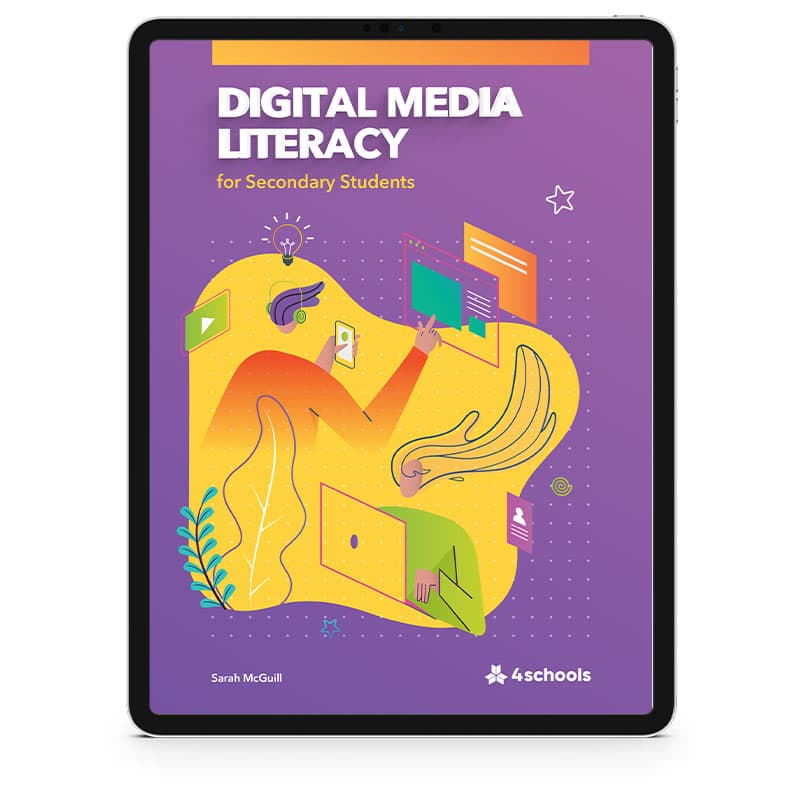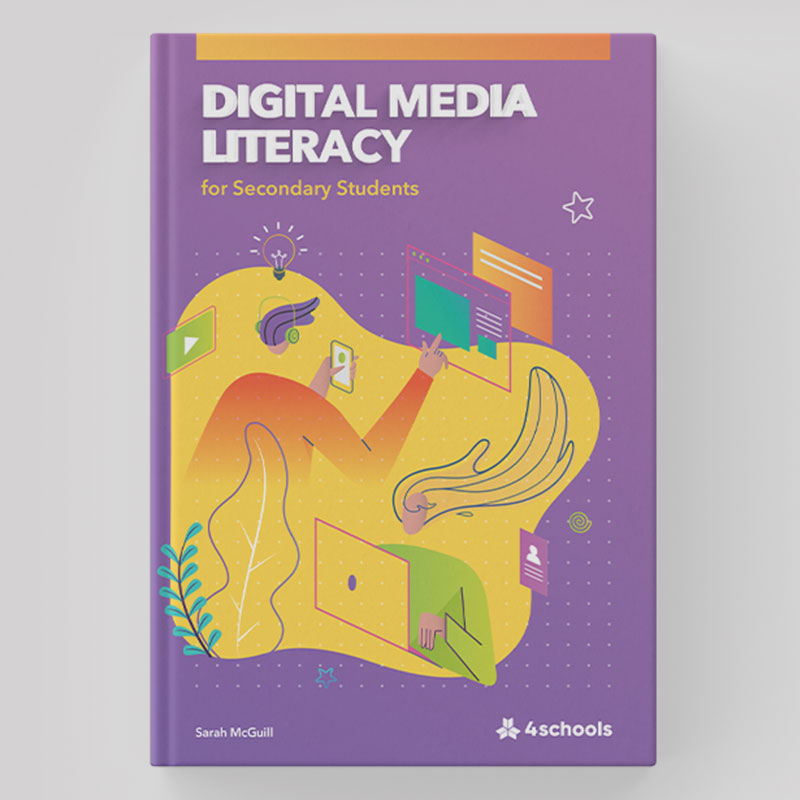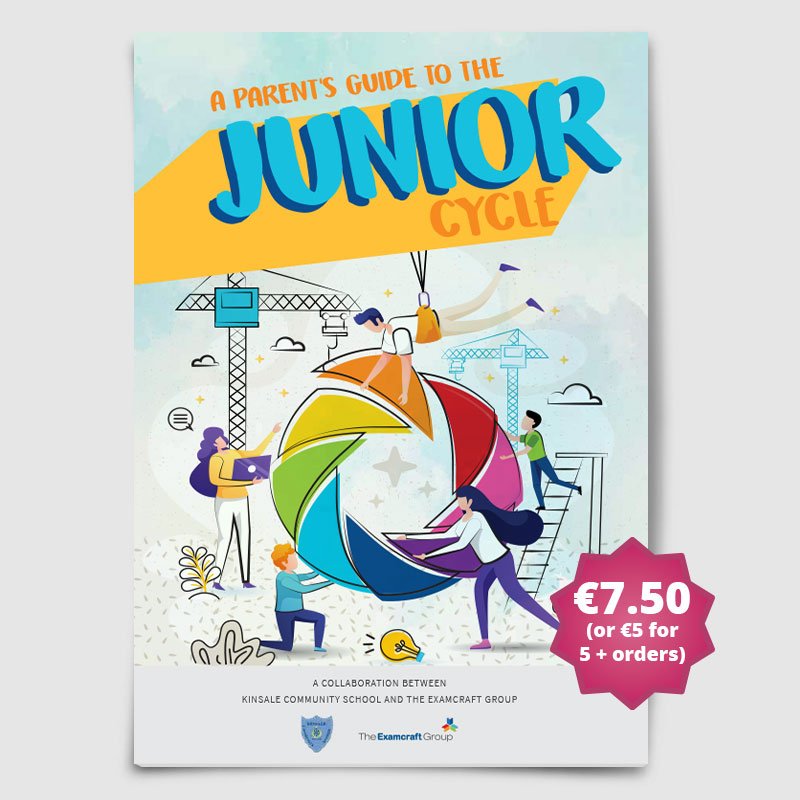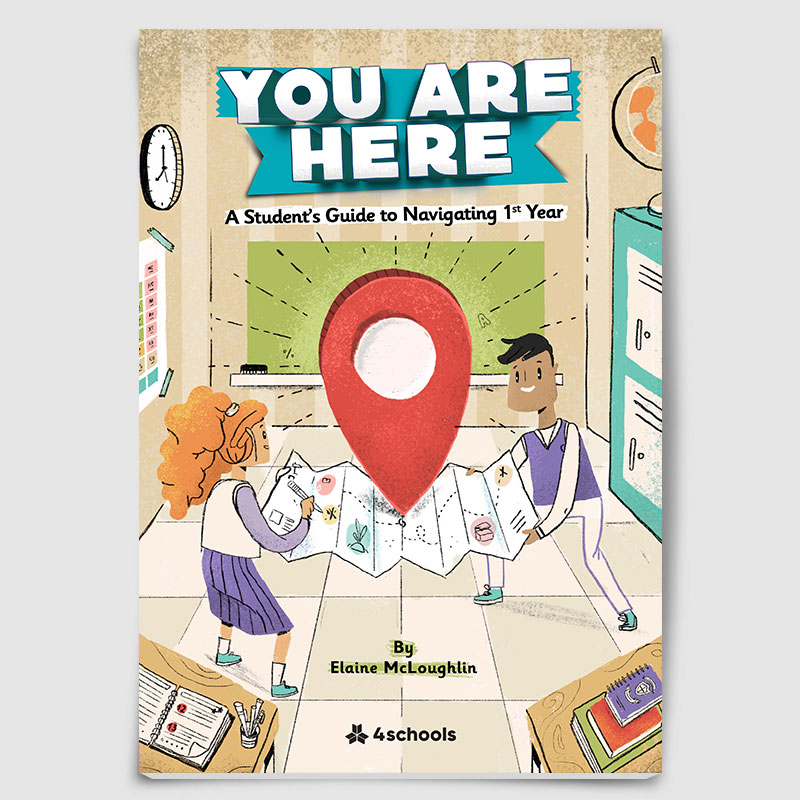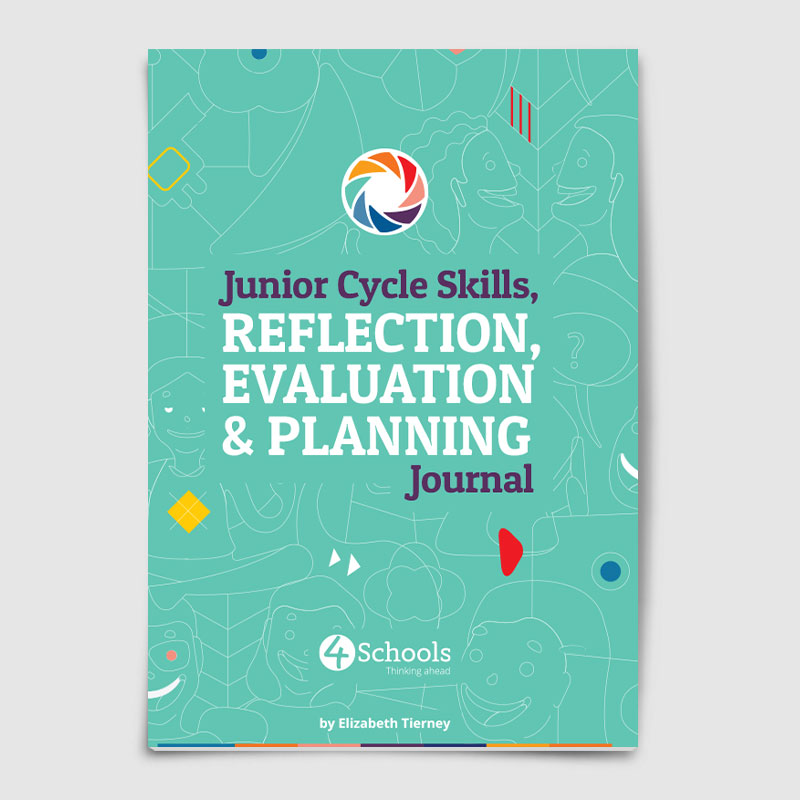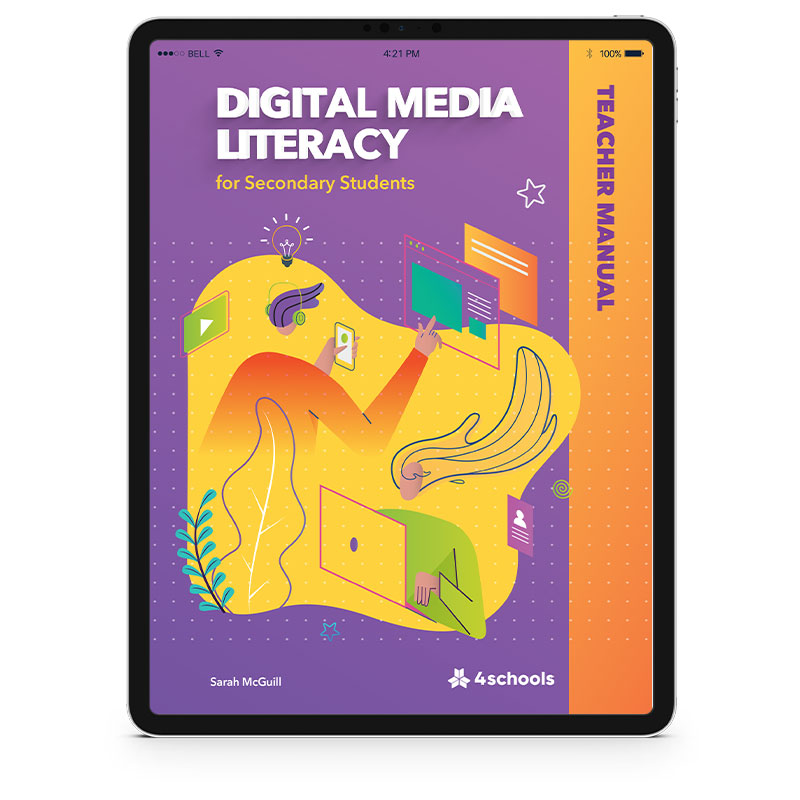
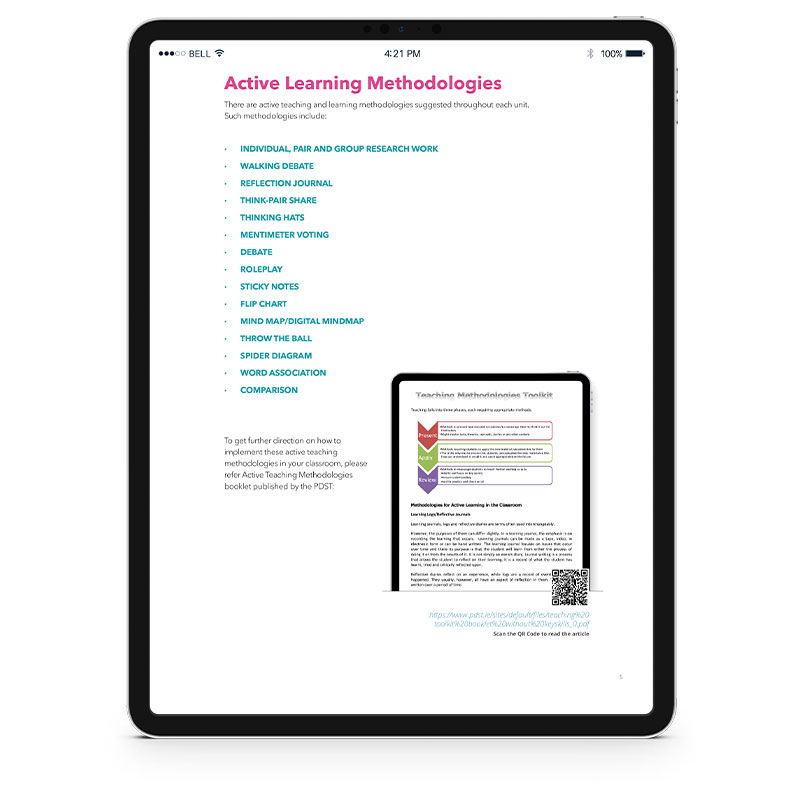
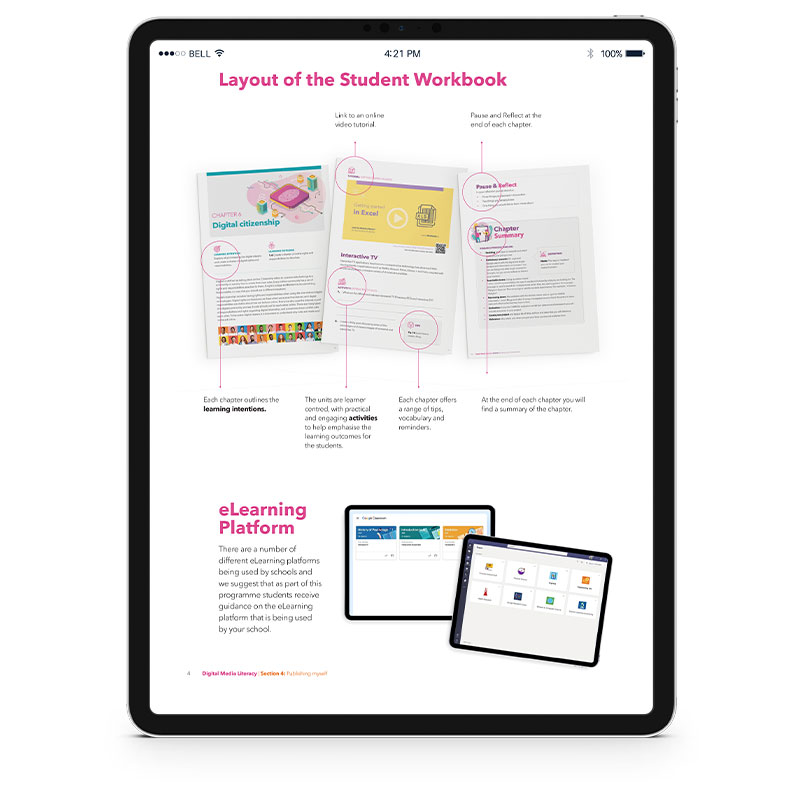
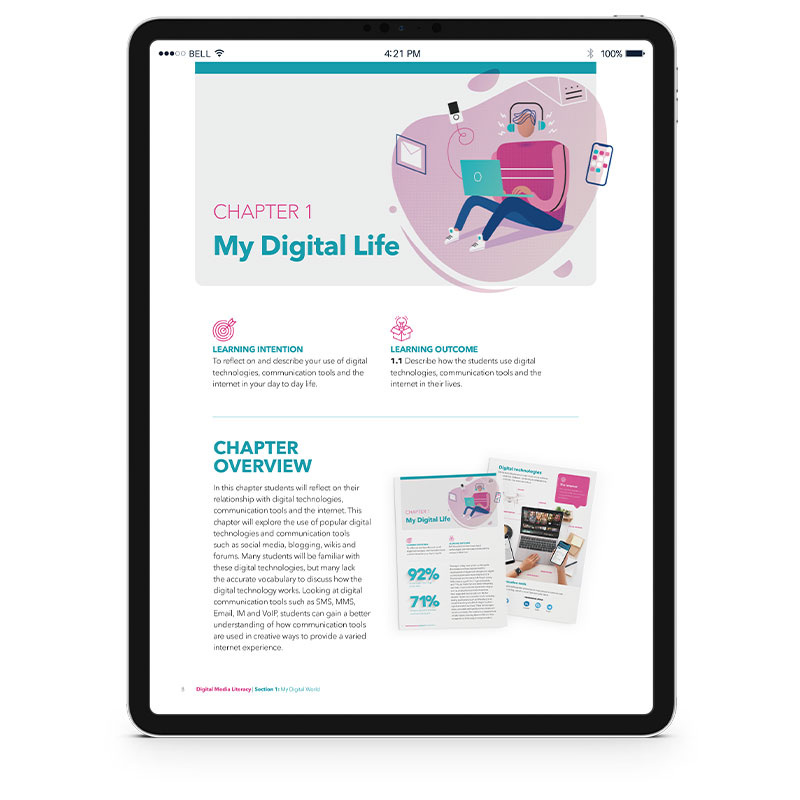
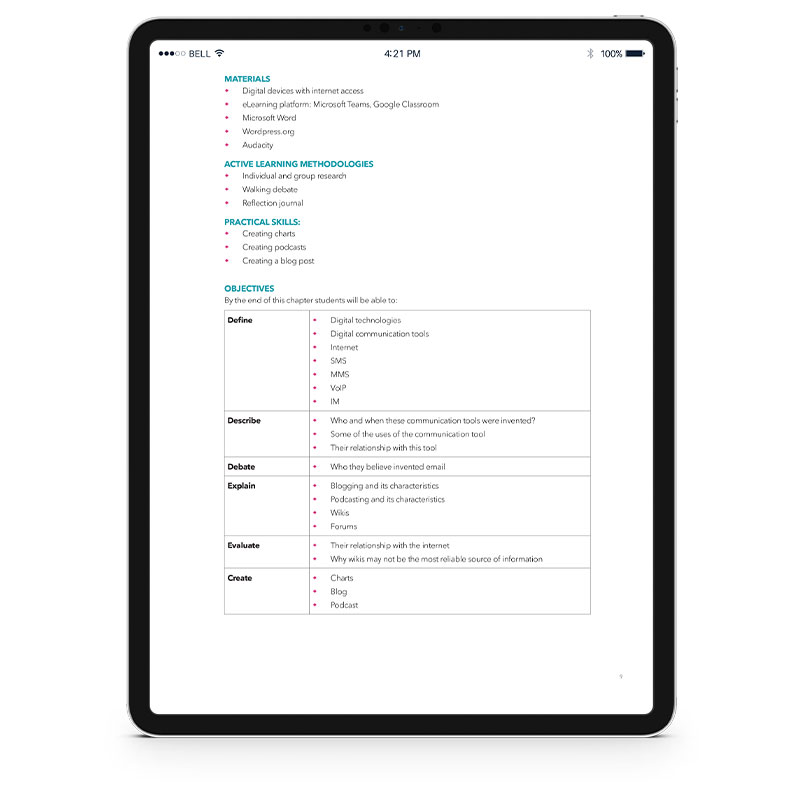
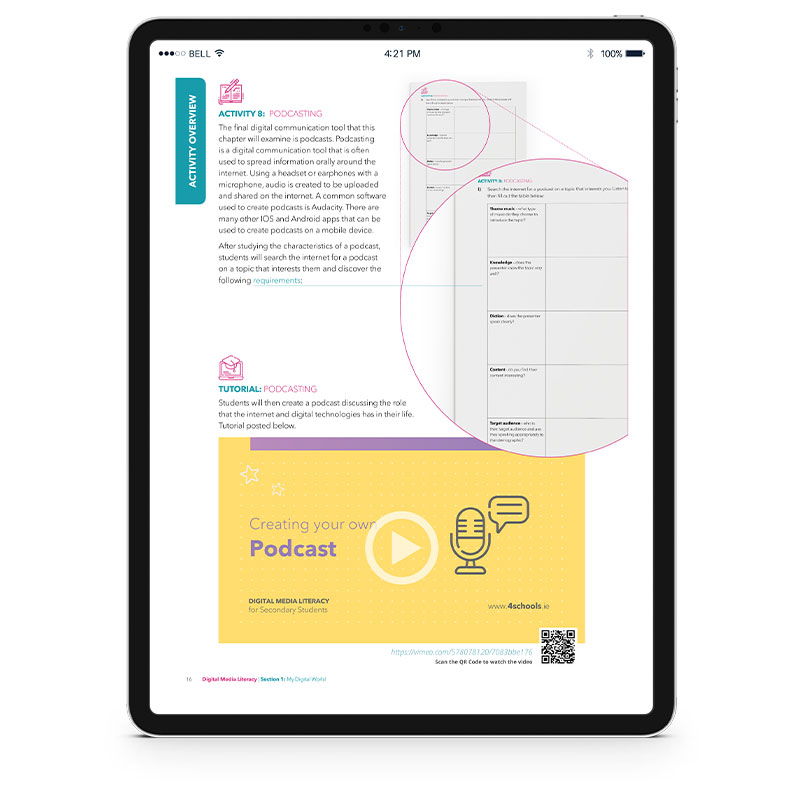
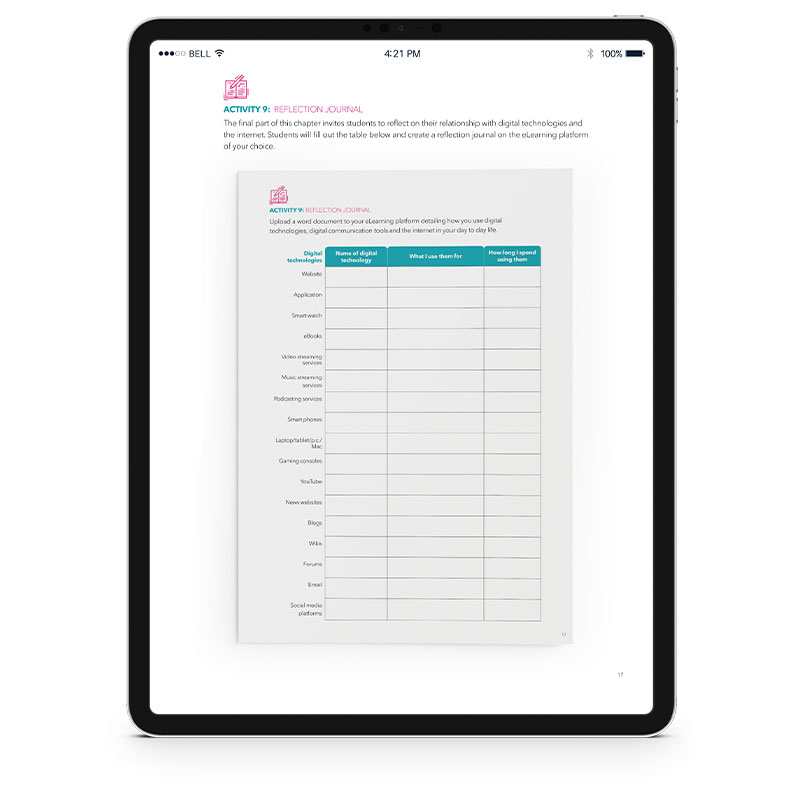
Digital Media Literacy for Secondary Students (Teacher Manual) (e-Book)
- Digital Media Literacy for Secondary Students is the first comprehensive textbook for the Digital Media Literacy short course for the Junior Cycle.
- The aim of the programme is to provide a comprehensive guide for the Digital Media Literacy Short Course, an activity-based course that is conducive to self-directed learning which maintains focus on the specification of the Junior Cycle short course, Key Skills of the Junior Cycle, and the Indicators of Wellbeing.
- The Teacher’s Manual is designed to aid planning, provide solutions and support to teachers undertaking this new, short course. It guides teachers on how best to support their students to develop new ICT skills and awareness of their digital world.
- The teacher manual outlines everything that is required to deliver a unit of learning and is structured in such a way that any member of staff could deliver the programme.
- Each chapter of the journal focuses on one of the twenty-eight Learning Outcomes for the Junior Cycle’s Digital Media Literacy short course and is supported with the learning intentions and lesson guidelines for each chapter in the teacher manual.
- The layout of each chapter follows the same structure, where teachers are guided to encourage students to reflect, evaluate, engage in an activity based on a Learning Outcome, plan for the week ahead and revise the skill they have learned and practised.
Overview of the programme
This student workbook is divided into four sections that correspond to the four strands outlined in the Digital Media Literacy learning resources specification from the JCT. Each chapter explores each learning outcome and is filled with active learning methodologies and engaging activities. The book’s chapters feature an abundance of videos and QR codes to topics of relevance to students along with blogs, research and analysis templates, reflection journals, tutorials, quizzes and debates.
Section 1: My digital world
This section is designed to allow students to evaluate their relationship with technology and the impact it can have on the individual.
Section 2: Following my interests online
Students will examine various ways in which information that is relevant to them is digitally published. A methodology will be established for recognising false or 'fake news' on the internet.
Section 3: Checking the facts
This section will require students to examine various digital media formats for bias. They will also look at the effect of technology on democracy.
Section 4: Publishing myself
Students will examine the information that they publish on social media. They will learn how to be safe online via technical aspects of popular digital platforms prevalent within modern online cultural life. They will also plan, research, reference and publish a digital media text.
Recommended guide to using the programme in your school
- The intention of the programme is to deliver a 100-hour digital media course to enhance students' digital skills and champion the role of online safety.
- Each unit takes approximately 20 hours to deliver.
- The course is designed to be flexible, allowing secondary school teachers to adopt the programme in line with their secondary curriculum resources as they wish.

